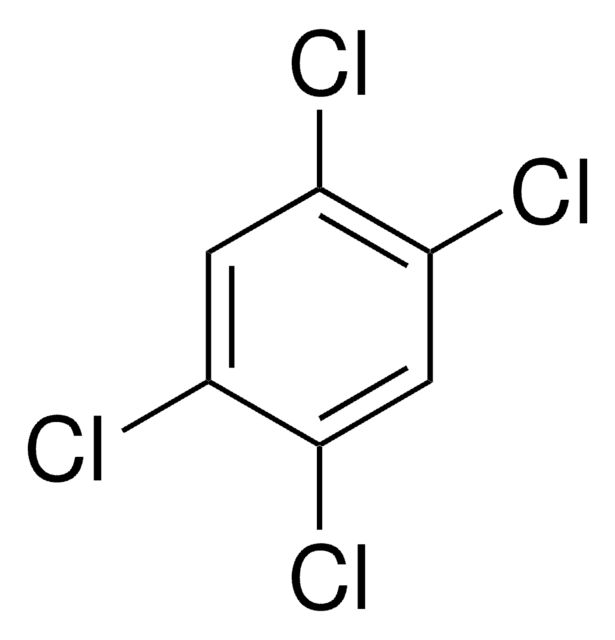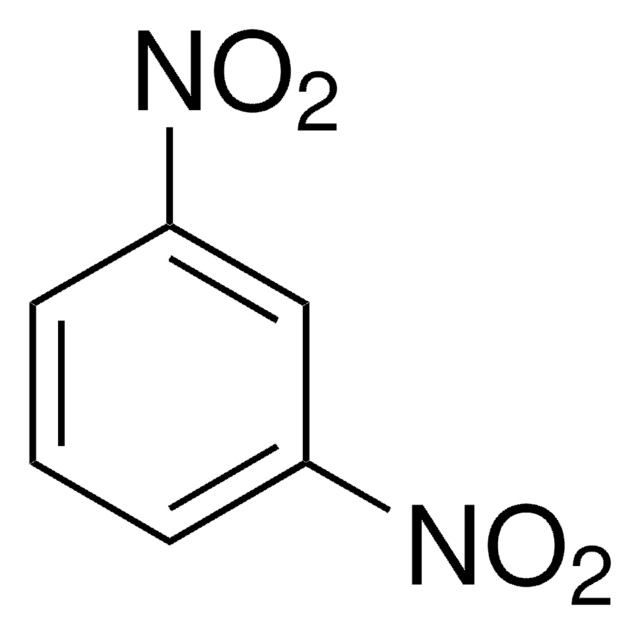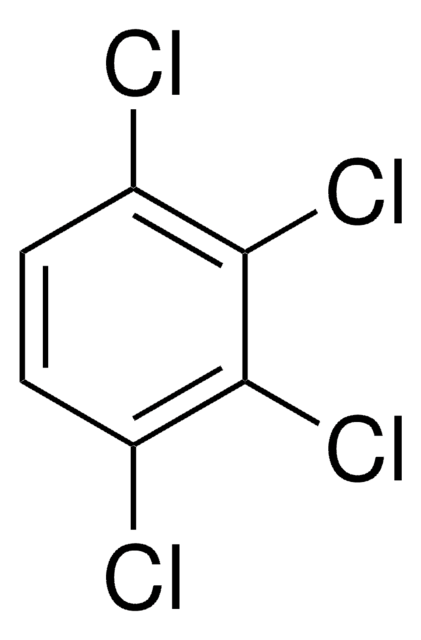102369
1,4-Dinitrobenzene
98%
Synonym(s):
p-dinitrobenzene, para-Dinitrobenzene
About This Item
Recommended Products
Quality Level
Assay
98%
bp
183.4 °C/34 mmHg (lit.)
mp
170-173 °C (lit.)
solubility
alcohol: soluble 1g in 300ml
boiling water: soluble 1g in 555ml
cold water: soluble 1g in 12,500ml
benzene: very slightly soluble
chloroform: very slightly soluble
ethyl acetate: very slightly soluble
density
1.625 g/mL at 25 °C (lit.)
functional group
nitro
SMILES string
[O-][N+](=O)c1ccc(cc1)[N+]([O-])=O
InChI
1S/C6H4N2O4/c9-7(10)5-1-2-6(4-3-5)8(11)12/h1-4H
InChI key
FYFDQJRXFWGIBS-UHFFFAOYSA-N
Looking for similar products? Visit Product Comparison Guide
Related Categories
General description
Application
Preparation Note
Signal Word
Danger
Hazard Statements
Precautionary Statements
Hazard Classifications
Acute Tox. 1 Dermal - Acute Tox. 1 Inhalation - Acute Tox. 2 Oral - Aquatic Acute 1 - Aquatic Chronic 1 - STOT RE 2
Storage Class Code
6.1A - Combustible acute toxic Cat. 1 and 2 / very toxic hazardous materials
WGK
WGK 3
Flash Point(F)
302.0 °F - closed cup
Flash Point(C)
150 °C - closed cup
Personal Protective Equipment
Choose from one of the most recent versions:
Already Own This Product?
Find documentation for the products that you have recently purchased in the Document Library.
Global Trade Item Number
| SKU | GTIN |
|---|---|
| 102369-25G | |
| 102369-5G | 4061838669575 |
Our team of scientists has experience in all areas of research including Life Science, Material Science, Chemical Synthesis, Chromatography, Analytical and many others.
Contact Technical Service










